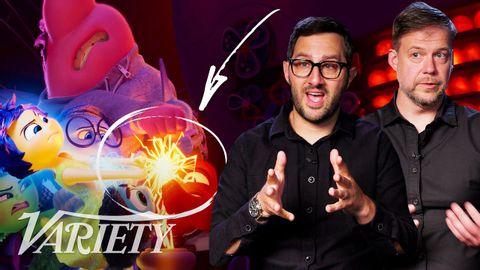反斗奇兵 2》皮克斯攝影師解析萊莉焦慮症發作的大場面 ('Inside Out 2' Pixar Cinematographers Break Down Riley's Big Anxiety Attack Scene)
VoiceTube 發佈於 2024 年 06 月 26 日  沒有此條件下的單字
沒有此條件下的單字US /æŋˈzaɪɪti/
・
UK /æŋ'zaɪətɪ/
- n. (u.)焦慮 ; 掛慮 ; 不安 ; 渴望 ; 熱望 ; 焦慮渴望 ; 焦急 ; 擔憂 ; 慮 ; 悒
US /ˈkɑnstəntlɪ/
・
UK /ˈkɒnstəntli/
